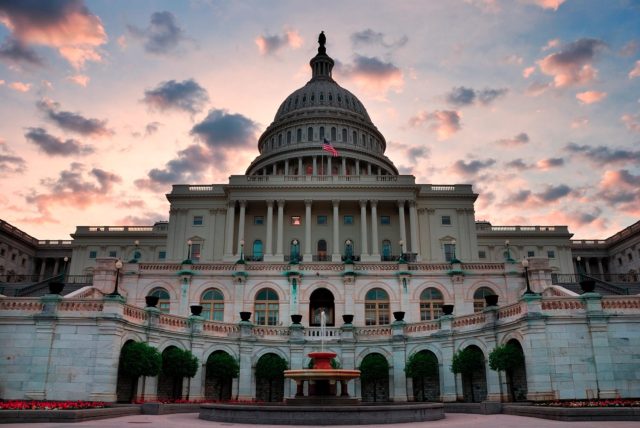Abolishing the FDA
Larry Van Heerden operates the Free-Market Medicine website.
The Food and Drug Administration (FDA) started out as a bulwark against snake-oil peddling. It has since swung back and forth between hostility and subservience to the drug industry. The FDA seems indifferent to the many deaths its own intransigence has caused and imperious when forced to defend its actions in court, resulting in a system that withholds life-saving drugs from the market, approves dangerous drugs, and denies everyone freedom of choice. The time has come to seriously consider abolishing the FDA.
Before 1992 the FDA was no friend of the drug industry. A 1980 General Accounting Office (now called the Government Accountability Office) report found that average drug-approval times in four other countries were six to 18 months shorter than the FDA’s approval time. The report listed several reasons for delays in the United States: imprecise FDA guidelines, inadequate feedback to industry, lengthy reviews, incomplete drug applications, industry’s slow rate of resolving deficiencies, congressional and consumer scrutiny of the drug-approval process, adversarial relationships between the FDA and industry, and the FDA’s conservative approach to drug regulation.
A 1985 study by Dale H. Gieringer used mortality-rate reductions due to new drugs and casualties from new drugs to estimate the costs and benefits of FDA regulation. On the benefit side, Gieringer examined avoidance of drug disasters, such as the thalidomide tragedy of the early 1960s. He concluded that the benefit of FDA regulation compared to regulation in other countries was about 5,000 to 10,000 casualties avoided per decade. On the other side he concluded: “[T]he evidence suggests that regulatory delays in new drug approval may be quite costly, with casualties on the order of tens of thousands of lives per decade.” On the other hand, according to one estimate, at least 106,000 people died from adverse reactions to FDA-approved drugs in 1994.
Over the last few years, exposés and articles on the FDA’s cozy relationship with drug companies have appeared in a WGBH Frontline telecast, the Boston Globe, the Washington Post, and the New York Times. Beginning with the Prescription Drug User Fee Act of 1992, Congress required drug companies to pay up to half a million dollars to the FDA with each new drug application. The money was used to hire more reviewers to get drugs on the market more quickly. By 2003 over half the FDA’s drug reviewers were paid with industry money and approval time for drugs had gone from over two years to less than six months. In fiscal 2006 industry money paid to the FDA was estimated to hit $382 million.
Meanwhile, the culture at the FDA had become industry friendly, which included a reluctance to challenge company claims about drug safety and effectiveness. The number of drug approvals became part of FDA employees’ performance evaluations. FDA reviewers were pressured to approve drugs or soften the language in their reviews or on drug labels. It became common for researchers with ties to the drug industry to serve on FDA advisory panels. In 2005, in the wake of a series of drug-safety scandals and criticism from Congress, the FDA changed course again, issuing a flood of drug-safety warnings and slowing approval times for new drugs, prompting charges that the FDA was over-reacting.
It’s not hard to find cases of FDA abuse. A May 1995 article in Reason discussed the case of Edwin Cohen, president of Barr Laboratories, who in 1989 testified before a congressional subcommittee about unfair treatment he had received from the FDA. Within hours FDA inspectors invaded Barr’s facilities in retaliation. Barr sued the agency repeatedly for relief from harassment, while it worked tirelessly to close him down. The company was hit with a blizzard of minor inspection violations and delays in drug approval. Its share price fell to one-sixth its former value. Production on several product lines was stopped, and one-quarter of the company’s employees were laid off. In 1993 Cohen was replaced by someone more agreeable to the FDA.
Articles in Life Extension (May 2001 and April 2002) describe the case of Durk Pearson and Sandy Shaw, who have been battling the FDA since 1994 for permission to sell folic acid with a label which includes the claim that the supplement is more effective than food sources of the vitamin in reducing the risk of neural-tube defects. The claim is well established in the medical literature and supported by the Institutes of Medicine and the National Academy of Sciences. In 1999, after years of bureaucratic delay, Pearson and Shaw sued the FDA. In an 11–0 decision, a federal appellate court ruled that the FDA had unconstitutionally suppressed this health claim. The FDA ignored the ruling and refused to authorize the claim, eventually issuing a regulatory ruling that it was “inherently misleading.” Pearson and Shaw sued the FDA again to force it to comply with the court’s previous ruling. In 2001 the court ruled that the FDA’s health-claim standard was arbitrary and capricious. District Court Judge Gladys Kessler found the FDA’s failure to comply with the earlier decision inexcusable and indicated she thought the plaintiffs and the public had been harmed. One survey showed that only 30 percent of women of childbearing age knew that folic acid reduces birth defects. By suppressing this information, the FDA had condemned thousands of babies to crippling birth defects.
For years the FDA refused to allow manufacturers to advertise the cardiovascular benefits of aspirin, despite clinical studies that supported the claim, resulting in the premature deaths of many thousands of people. Regular aspirin use slightly increases the risk of stroke for some, and the FDA was worried that this risk would be overlooked by consumers. As Paul H. Ruben explains: “This behavior is typical of the agency. It invariably places a much greater weight on any potential harm from a drug than on any benefit.”
“Tough on Vaccines”
In the March 2006 issue of Health Care News, Henry I. Miller, former head of the FDA’s Office of Biotechnology, argued that the risk-averse FDA “has been especially tough on vaccines. The agency has rejected evidence of safety and efficacy from European and Canadian vaccine approvals, prematurely withdrawn life-saving products from the market because of mere perceptions of risk, and set the bar for the testing of new vaccines almost impossibly high.”
An April 2005 Boston Globe article on the collapse of a promising drug for lung cancer noted that challenges await the FDA as researchers continue to develop precision cancer drugs that benefit small groups of patients. These drugs will require a meticulous process of trial and error to match patients with the right drug. Pulling such a drug off the market could deny treatment to a subset of patients who have experienced remarkable recoveries with it. The article questions whether the FDA’s approval process, which is geared toward drugs that work broadly across the population, can handle such precision drugs.
According to a 2002 WGBH Nova telecast, Dr. Brett Giroir isolated a compound, called BPI, which is an exact copy of a protein found in human white blood cells and which appears to neutralize the primary toxin responsible for meningococcal disease. Known also as meningitis, it is a rare affliction that strikes children and young adults, spreads rapidly, and can result in multisystem failure, lost fingers and limbs, deafness, permanent brain damage, or death. In a major trial for FDA approval, BPI seemed to reduce the number of limb amputations by 68 percent and increase survival by 25 percent, but the results were not considered statistically significant. Further trials to get the drug to market may take years. Giroir commented: “But it’s very difficult to do a trial in a rapidly progressive disease like meningococcal disease, that by the time you get the patients many of them are dead, in a disease that’s so rare, and in a disease where, I think, the rules are different.”
Given the devastating consequences of the disease, doctors and parents might choose, on behalf of a child, to accept the risks of using BPI, since it is made from a protein that is part of the body’s own defense system. However, the FDA thinks otherwise, and patients are left to suffer their fate without BPI.
In 2001 Abigail Burroughs, an honors student at the University of Virginia, died of cancer, the Wall Street Journal reported, “after she was stymied in her efforts to obtain new cancer drugs that her oncologist believed could save her life, but which were still in clinical trials.” The Abigail Alliance was subsequently formed to help terminally ill patients gain access to promising drugs that have not yet been approved by the agency. In a lawsuit against the agency the Alliance argued that for terminally ill patients the restrictions on pre-approval availability of such drugs amount to a death sentence. The problem, the Journal argued in 2005, is that the FDA’s oncology division is stuck with an outdated mindset that insists on placebo-controlled trials when newer statistical methods have been developed that could get promising therapies to terminally ill patients sooner.
Economists Daniel Klein and Alex Tabarrok have put their finger on the FDA’s fatal conceit: Beginning in 1962 “the FDA began to act on the premise that it could establish authoritative knowledge of efficacy prior to experience and experimentation in actual market processes.”
False Sense of Security
If abusing patients by withholding drugs is a problem, so is the reverse: creating a false sense of security.
A Consumer Reports exposé in January 2006 found that tens of millions of people may have been exposed to the rare but serious side effects of a dozen common prescription-drug types in the United States during the 12 months ending in September 2005. Most of the drugs are used to treat conditions that are not usually crippling or life-threatening. However, these drugs can cause rare side effects such as heart attack, stroke, muscle breakdown, kidney damage, increased cancer risk, neurotoxicity, irreversible bone loss, increased asthma-related deaths, increased blood pressure, heart arrhythmias, psychosis, depression, and paranoia.
The FDA seems not to realize, as Consumer Reports argues, that drug companies: (1) sometimes withhold publication of studies that are disappointing or worrisome; (2) present study results to the FDA in ways that minimize safety concerns; (3) have often failed to conduct post-marketing studies needed to identify risks that often emerge after drug approval; and (4) engage in misleading advertising about safety and efficacy.
Yet people think the FDA is looking out for them.
FDA-defender Philip J. Hilts argues that such misconduct occurs when drug-company officials lose the moral sense of their actions as they act out their role of company and shareholder advocate, knowing that the FDA exists to play the (legally mandated) countervailing role of consumer advocate. Another factor that helps explain (though not excuse) such industry behavior is the “all or nothing” system that FDA gatekeeping perpetuates. Companies spend huge sums of money to shepherd a drug through FDA approval. The withdrawal of a single approved drug may affect a company’s finances to the point of endangering its survival. In a system without such gatekeeping, where drugs were available along with all the information on risks and benefits, the market would sort the wheat from the chaff, dramatically lowering the financial stake in any single drug and reducing the temptation for drug companies to engage in fraud and deception.
End the FDA
The first step to correct these problems is to abolish the FDA, stripping the government of the power to approve drugs (and medical devices) for the market or to remove them from the market. Any rule-making for disclosure and lawsuits for fraud should be devolved to the states.
Even if the FDA were omniscient, objective, and impervious to outside influence, it would be wrong to give it the power to withhold drugs from the market. The proper function of government is to protect individual rights and guard against fraud, not to restrict freedom of choice to protect people from their own ignorance. In fact, the FDA has shown itself to be imperious, subject to prevailing political winds, and indifferent to the thousands of deaths and injuries it has caused.
No amount of pre-market testing is sufficient to declare a drug safe and effective, which the FDA implicitly does when it approves a drug for the market. Other writers have pointed out that most adverse drug reactions are associated with prolonged use or heavy dosages, which don’t arise in pre-market tests. Safety and efficacy depend strongly on individual factors, such as age, sex, genetic makeup, physical strength, condition, activities, allergies, diet, and disease combinations, which cannot be exhaustively examined in pre-market testing. Consumer Reports on Health noted in May 2005 that “even the best research of new therapies can’t provide evidence of their long-term safety and efficacy.” The best that can be done is to gradually accumulate information on the safety and effectiveness of a drug for varying populations, conditions, and circumstances as an increasing number of people consume it over longer periods. On the other side of the issue, withholding promising but untested (and possibly dangerous) drugs from patients who are at death’s door and have no other options left, as the FDA routinely does, is unconscionable.
In short, the FDA is wrong to withhold drugs from the market and wrong to put the government’s imprimatur on them.
As early as 1985 Dale Gieringer recommended replacing FDA drug approval with patient package inserts and a “system of graded safety and efficacy ratings for unproven drugs.” The wording used in such a graded system would be the subject of much debate. Here is an example of one such system for the safety of drugs that treat chronic diseases: 5: “Consumed by millions of people for at least 5 years with no known problems; safe at recommended doses.” 4: “Consumed by millions of people for at least 4 years; considered safe at recommended doses except for certain populations or situations; see package insert for details.” 3: “Consumed by hundreds of thousands of people for at least 3 years; likely to be safe for most people except for certain populations or situations; see package insert for details.” 2: “Exercise caution; consumed by tens of thousands of people for at least 2 years; see package insert for populations or situations of known risk; unknown risks may be present.” 1: “Exercise extreme caution; although extensive clinical trials suggest this drug is safe, except as noted on package insert, it has been not consumed by enough people for enough time to clearly establish populations or situations where it may be harmful.” 0: “Little or no clinical testing; not widely consumed; presumed dangerous or fatal.”
With such a rating system patients would be able to decide for themselves what level of risk they were willing to assume. As consumption of a particular drug increased and adverse reports failed to materialize, its rating would slowly rise.
A crucially important part of the drug market, and one at which the FDA has failed abysmally, is the collection, analysis, and dissemination of information on adverse drug reactions. In line with the government’s typical command-and-control approach, busy physicians are supposed to report serious drug reactions to the FDA’s MedWatch program without compensation for their time. As Consumer Reports noted in January 2006, the unsurprising result is that only 1 to 10 percent of such incidents are ever reported. Terminating the MedWatch program would allow superior private-sector initiatives to compete for this crucial function. One can imagine, for example, a health-information company paying a fee for every adverse drug report submitted as well as paying a premium for the first 100 reports of what turns out to be an adverse safety trend with a particular drug. Such a company would have little trouble finding a market among consumers and drug makers for its reports on drugs with safety problems.
In the late 1960s the FDA’s Drug Efficacy Study examined the effectiveness of drugs that had been on the market before enactment of mandated pre-market drug testing. As a result of the study, around 300 drugs were removed from the market after being judged ineffective. In a market-driven system, such as the one proposed here, what would prevent the reappearance and wide consumption of worthless or even dangerous drugs?
One answer is private testing and certification of pharmaceutical drugs along the lines of what Underwriters Laboratories does for household appliances. Several writers have discussed how, in the absence of the current FDA monopoly, private firms could adequately and profitably fill this role.
However, a consumer’s ace-in-the-hole for selecting the right drugs is the information available from reliable sources on the Internet and in print. Consumer Reports launched a free website (www.CRBestBuyDrugs.org) in December 2004 that allows consumers to check on the safety, efficacy, and price of drugs. The site offers reports on a dozen widely used drug categories, and new categories are added regularly. A Consumer Reports subscription website (www.ConsumerReportsMedicalGuide.org), “developed in collaboration with two prestigious organizations of international physicians and pharmacists, offers in-depth information for more than 60 common conditions and 900 prescription and over-the-counter drugs.” Further, Consumer Reports publishes in hardcover the Complete Drug Reference, which provides information on more than 11,000 drugs.
Regulation advocates may protest: “What about the guy who consumes a drug without reading the package insert, consulting a medical professional, or looking at consumer websites or reference books? Shouldn’t he be protected?” In short, no. Forcing all consumers to live by rules that cater to the least responsible individuals imposes huge costs on everyone else and ultimately fails to protect even the willfully ignorant. Something as simple as an aspirin may be a life-saving treatment under certain conditions (onset of a heart attack) and a death warrant in other circumstances (when combined with blood thinners). There is no alternative to becoming an informed consumer of pharmaceutical drugs. Ignorance is not an option.
Larry Van Heerden
This article was originally published on FEE.org. Read the original article.







